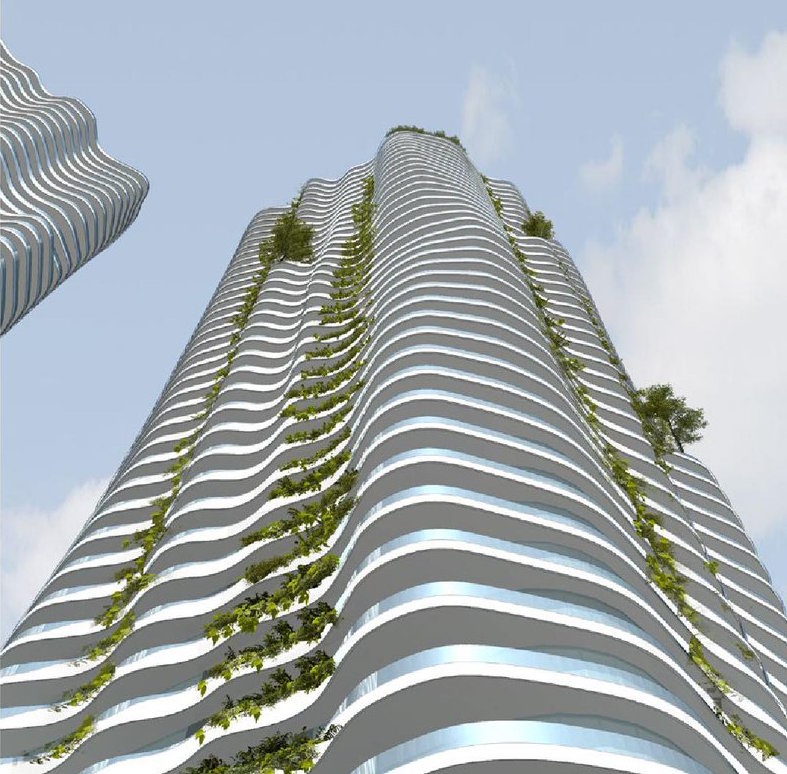South Lake Union isn’t known for unique architecture, but that could change if an intriguing new project proceeds at Denny Way and Stewart Street. Curvy undulating balconies protrude from two 42-story towers and anchor a wealth of hanging plants to make the face of the towers feel like a lush cliff face. Not your typical dumb glass box!
The project is still making its way through the design review process, but apparently the plot sold for $52.8 million suggesting the latest developer means business. In 2007, a different design fizzled out with the recession and in 2012 another plan got a Master Use Permit but was never built. Tonight at 7pm, the Downtown Design Review Board will discuss the newest plan at Seattle City Hall (Room L280) and accept public comment.
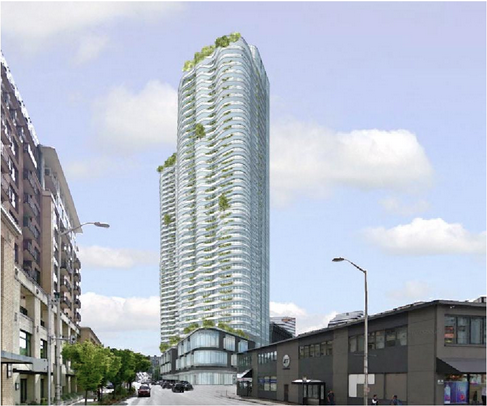
The project plans to bring 889 apartments to market, taking a bite out of Seattle’s rabid demand for housing. Dual towers will emerge from a three-story podium on a large triangular plot carved out by Denny Way, Stewart Street, and Minor Avenue. The architects envision a wealth of retail space on the street level. 149,309 square feet of retail in all, to be exact.
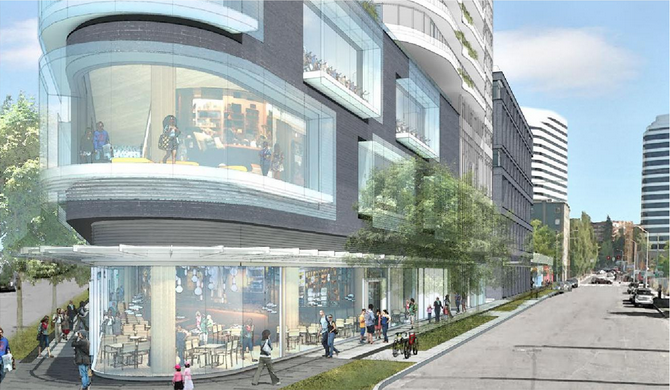
Pedestrian Galleria
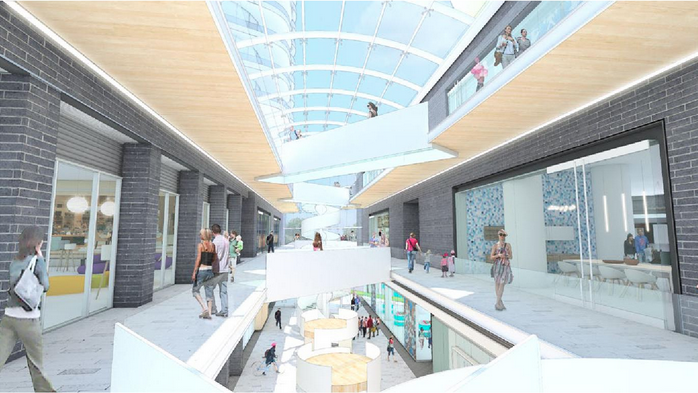
The preferred design approach would convert an existing alley to a pedestrian galleria space based on the lofty ornate gallerias of Europe. The galleria design has a modern feel compared to its cited Milanese example but still looks prepared to provide pedestrian an interesting space protected from the elements, but penetrated by plenty of natural light. Early indications are that the galleria would be open only during business hours but that could be fairly late depending on the businesses that open up shop.
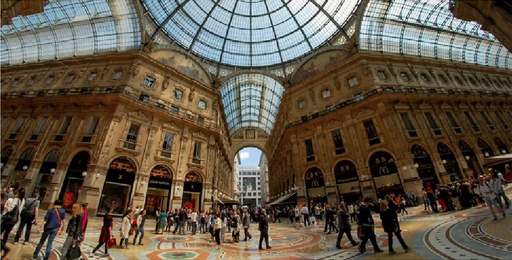
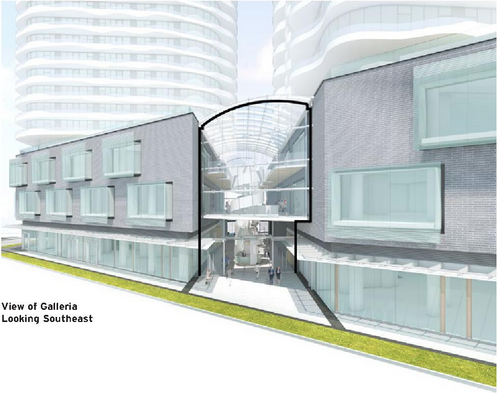
Green Features
The hanging plants are one feature hinting at the proposal’s aim to a big public benefits package with eco-friendly features. The hanging plants are intended to provide “a vertical habitat for pollinators and birds.” At nooks along the tower, the design calls for “perched forests” of shore pine that will peak out from the facade. Additionally, the facade is intended to be bird friendly. Wouldn’t be good to attract all those birds and kill them with sheer glass facades!
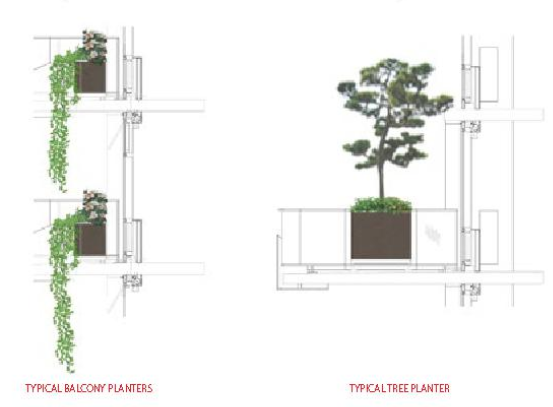
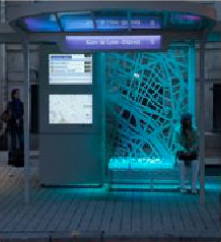
The landscaping at ground level is also getting a big upgrade with 23 trees planned including Zelkovas, Forest Green Oaks and Redtwig Dogwood trees plus drought resistant boulevard plantings. Decorative and “interpretative” stone pavers should also liven the sidewalks and perhaps provide some water permeability.
The public benefits plan also lists six bike racks, three enhanced bus shelters (with underlit benches and wayfinding signs), widened sidewalks, and shortened pedestrian crossing distances at Minor and Denny (down from 110 feet to 48.5 feet) and at Denny and Yale (60 feet to 38.8 feet). These changes should encourage walking, biking and riding transit.
Neighboring Towers
Architects for other nearby projects have also come up with some edgy designs that collectively could turn this section of South Lake Union into a vibrant architectural oasis. Just to the west of the twin undulating garden towers, architects are also thinking outside the box with a wavy design at 2014 Fairview that would break up the glass rectangle monotony.
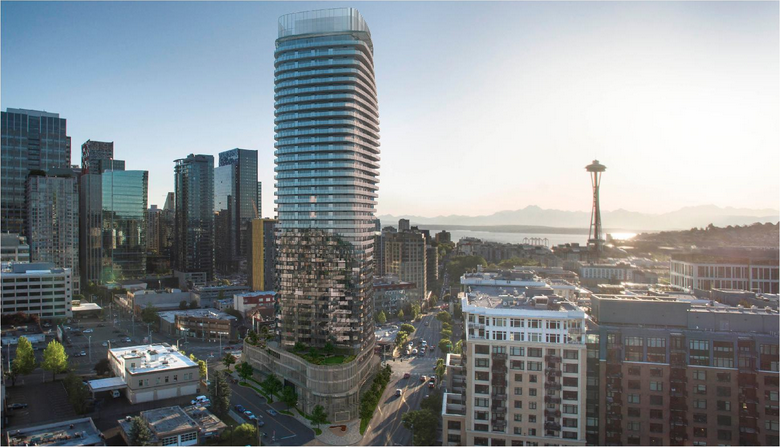
Taking a different tack, architects created an interesting facade thanks to orange highlights down the seam, in the middle, and above. The 1901 Minor Ave proposal is also going before the Downtown Design Review Board today at 5pm as it seeks a land use permit (and it’s the same room so it’d be possible to attend both). Two 40-story towers on a eight-story podium will contain 737 apartments (down from an earlier design with 943 apartments) atop 479 parking stalls.
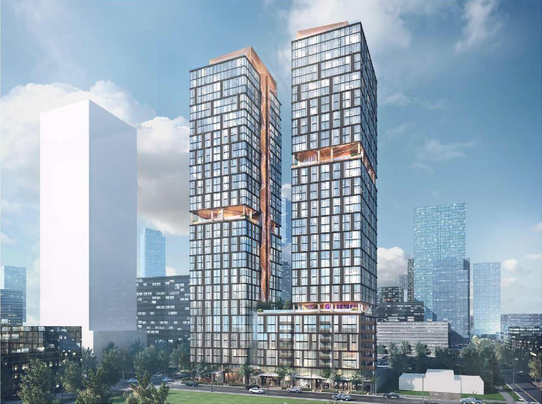
Also of note is the “Nexus at 1200 Howell” project that took the ubiquitous rectangular prism and sliced it up and turned it on its axis to provide a much more interesting tower. Plans calls for 41 stories, 364 apartments, ground level retail, an upper level restaurant, and 275 parking stalls.
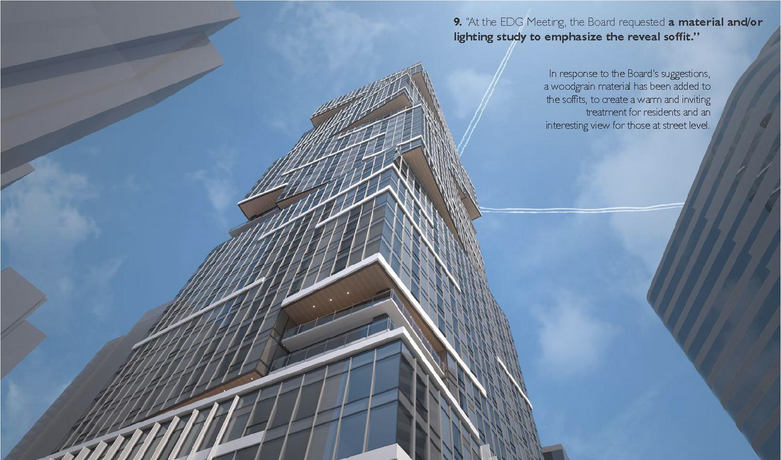
The Parking
If cars could talk like in Pixar movies, they’d be thrilled with the underground parking proposed underneath the wavy twin garden towers. The 783-stall garage will increase the neighborhood’s vehicular population. Oversized parking ramps are an issue urbanists should bring up at just about every design review. This one is no different. Let’s plan for a less car-dependent future and start with smaller parking ramps in our urban neighborhoods. It’s like quitting smoking. The best way does not involve surrounding yourself with cartons of cigarettes.
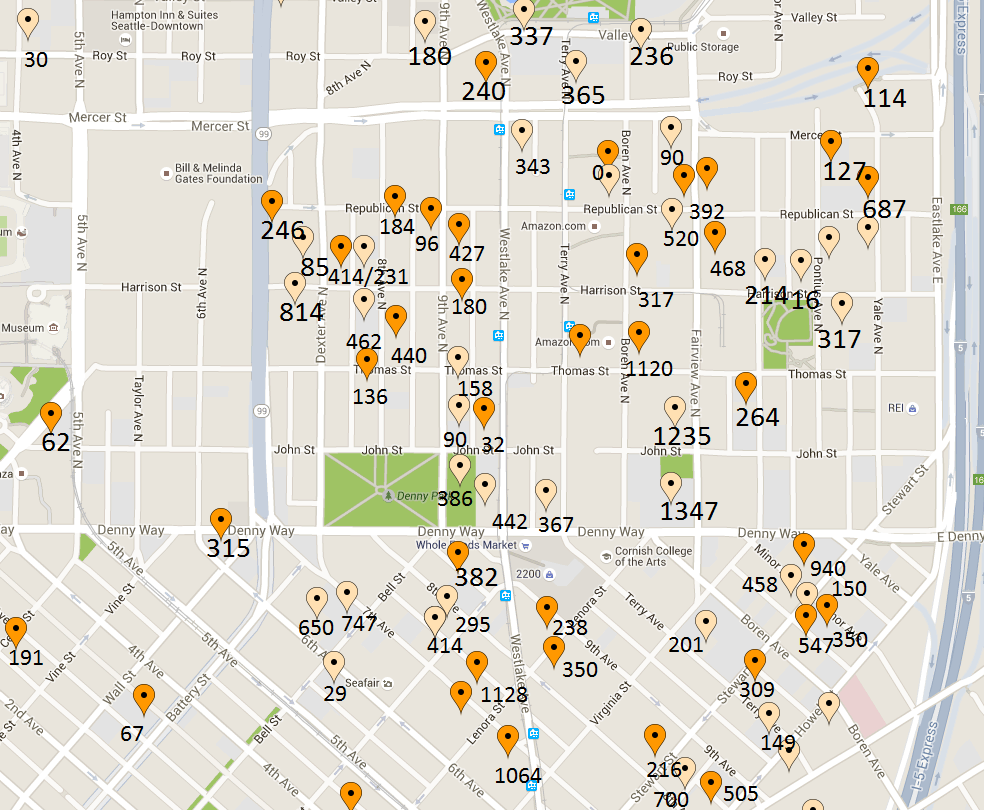
Shameless Plug For A Route 8 Upgrade
Upon completion of the two projects going before the downtown design review board today, more than two thousand more people will call the Denny Way corridor home. A few blocks to the northwest, 1,179 apartments are in the works in another double-towered project. Plus, the Denny Way corridor is the site of another ten or so single tower projects with around 400 apartments each either under construction or planned, including Tilt49 and Kinects which are well underway and may top out soon. Unfortunately, the promising corridor is cursed by one of the region’s most notoriously slow buses: the 8. The spate of 40-story towers going up should get us thinking seriously about a transit fix. Instead we only seem to be thinking about parking, which could induce more trips, worsen the already bad congestion, and further slow the bus.
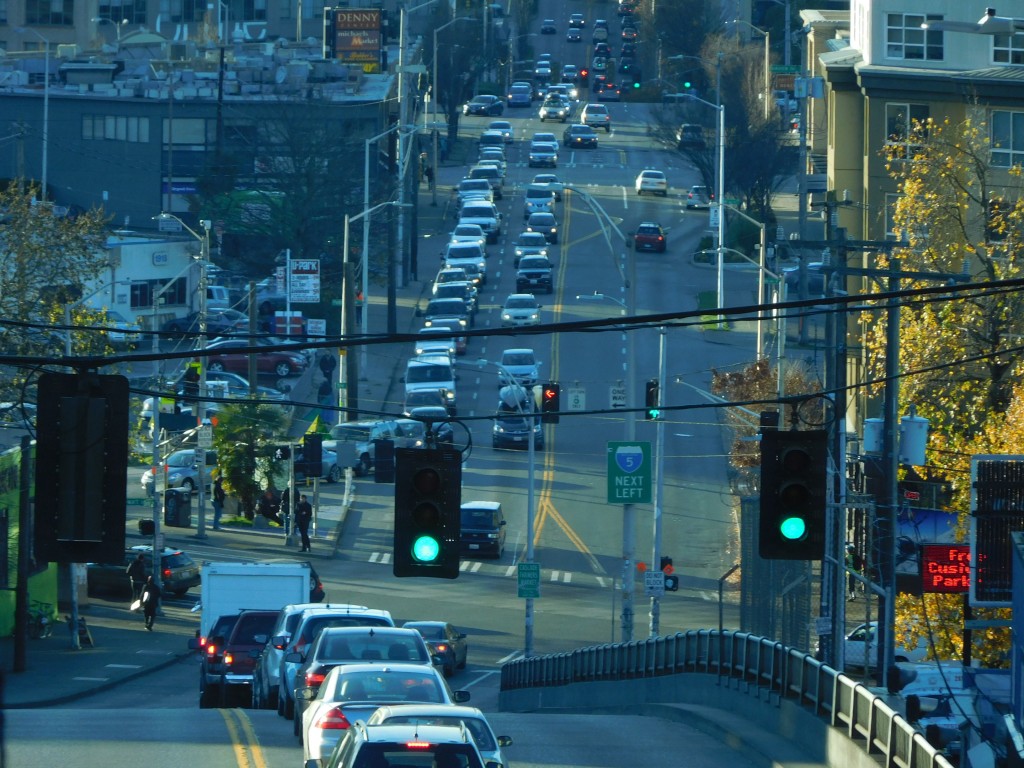
In the short-term, better street design for bus operations could give the 8 a nice boost. Ryan Packer penned an excellent piece on the 8’s ripeness for upgrade: “The TMP [Transit Master Plan] estimates that if the targeted improvements are implemented, travel time would be reduced by 22% for riders going from one end of the corridor to the other.” Queue jumps and banning left turns in key spots could prevent some of the terrible congestion that impedes the 8 and makes it so unreliable. Off-board payment and platform level boarding could also speed the boarding process and save time. One challenge is that Denny Way wasn’t identified for RapidRide+ upgrades in the Move Seattle levy meaning funding would need to be secured elsewhere.
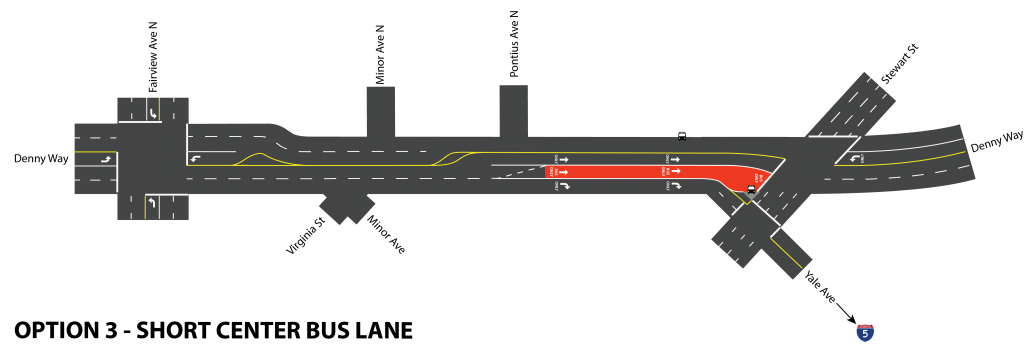
In the long-term, we should be exploring the option of a subway to provide high-speed, high-capacity service in this booming and rapidly urbanizing part of the city. Many have dreamed of the possibility; my ruminations are right here. A Metro 8 Subway would be expensive (and beyond the scope of Sound Transit 3) but the possibility of getting from SLU to Capitol Hill in about five minutes would be a game-changer.
Sound Transit plans to bend the Ballard-to-Downtown line through Denny Triangle/SLU via the stations near SR-99 and Harrison Street intersection and Westlake Avenue and Mercer Street intersection, before turning south to Westlake Center. That means the possibility of interlining the subway with the Ballard line cutting down on tunneling and station costs. Essentially, the line would be the Lower Queen Anne (aka Uptown) stop, the SR-99 stop, the Westlake Avenue stop, plus an additional stop near Fairview Avenue, one at Broadway in Capitol Hill, and perhaps one at 23rd Avenue. It’d be the high quality transit our dense neighborhoods just north of Downtown sorely need.
Doug Trumm is publisher of The Urbanist. An Urbanist writer since 2015, he dreams of pedestrian streets, bus lanes, and a mass-timber building spree to end our housing crisis. He graduated from the Evans School of Public Policy and Governance at the University of Washington in 2019. He lives in Seattle's Fremont neighborhood and loves to explore the city by foot and by bike.

